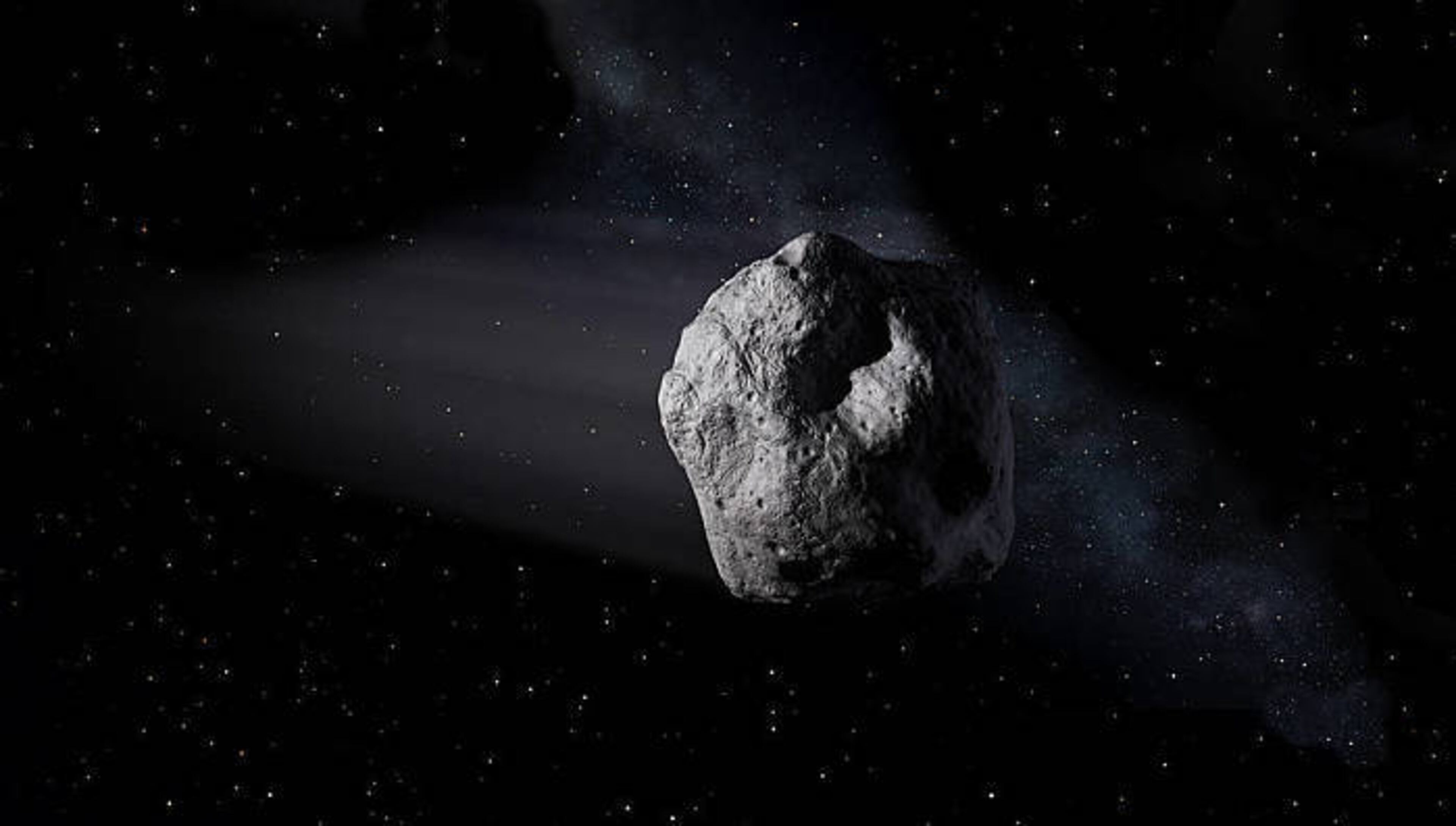'Potentially hazardous' monster asteroid will fly close to Earth
A monster space rock classified by NASA as "potentially hazardous" is headed towards Earth.
Asteroid 2002 AJ129 – which at 0.7 miles is wider than the tallest building in the U.S. (New York's One World Trade Center) stacked on top itself – is predicted to miss our planet, according to Metro. However, it will pass relatively close when thinking in terms of outer space.
»RELATED: NASA: Asteroid could destroy Earth in 22nd century
NASA classifies any space object surpassing 459 feet wide and passing within 4,660,000 miles of Earth as "hazardous," according to a 2013 report on the space agency's website. There are about 1,000 such known space objects monitored by NASA.

This asteroid is more than eight times wider than the minimum (3,696 feet) and will pass within just over half the minimum distance (2,615,128 miles) to our planet.
For a reference point, the moon orbits Earth at a distance of about 238,855 miles.
The giant asteroid is expected to "narrowly" miss our planet on Feb. 4, whizzing pass us at a whopping 67,000 miles per hour. It will be the biggest and fastest space object to fly near Earth this year, according to The Daily Star.
NASA has monitored this asteroid, like many others, for several years, Paul Chodas, who manages the Center for Near Earth Object Studies (NEOS), said in a report from GCreport.com. Chodas said NASA has been following AJ129 for the past 14 years and that they 'know its orbit very accurately,' so there is no cause for concern.
Although the rock will almost certainly not collide with us, as long as it remains within its current trajectory, scientists have previously warned that such an impact could have a dire impact on our planet.
"These would not be pleasant times," Charles Bardeen, of the National Center for Atmospheric Research said during a presentation at the American Geophysical Union (AGU) said, according to The Daily Mail.
A 2016 study found that the impact of a slightly smaller space object would bring about a mini Ice Age. Temperatures would fall across the planet as much as 8 degrees Celsius. The effects would last for several years, leading to potentially severe devastation around the globe, not to mention the havoc caused by the initial impact.
»RELATED: Asteroid passes inside Earth's satellite ring, '20 times closer than moon'
However, such an impact would not likely lead to a global extinction event. The space rock that wiped out the dinosaurs is estimated to have been between 6.2 and 9.3 miles wide.
Fortunately, NASA scientists don't foresee any such incident occurring in the near future. Nonetheless, the space agency is planning for the worst.
Current technology wouldn't be able to stop such a massive object from hitting our planet, but NASA has plans in place to mitigate the impact of such a direct hit. Additionally, the space agency is developing a refrigerator-sized spacecraft that would be able to prevent such collisions. The technology is slated for testing in 2024.

"NASA established its Planetary Defense Coordination Office (PDCO) in 2016, which is responsible for finding, tracking and characterizing potentially hazardous asteroids and comets coming near Earth, issuing warnings about possible impacts, and assisting plans and coordination of U.S. government response to an actual impact threat," a press release on the agency's website explains.
The deflection technology under development would change "the speed of a threatening asteroid by a small fraction of its total velocity." If this is done long enough before a predicted impact, the relatively small nudge will "add up over time to a big shift of the asteroid's path away from Earth."
NASA and FEMA have even teamed up for emergency planning exercises, in case of a future collision scenario.
"It is critical to exercise these kinds of low- probability but high-consequence disaster scenarios," FEMA Administrator Craig Fugate said after one such planning session in 2016. "By working through our emergency response plans now, we will be better prepared if and when we need to respond to such an event."
